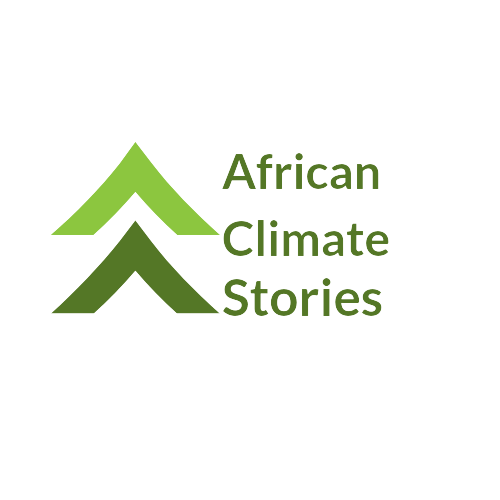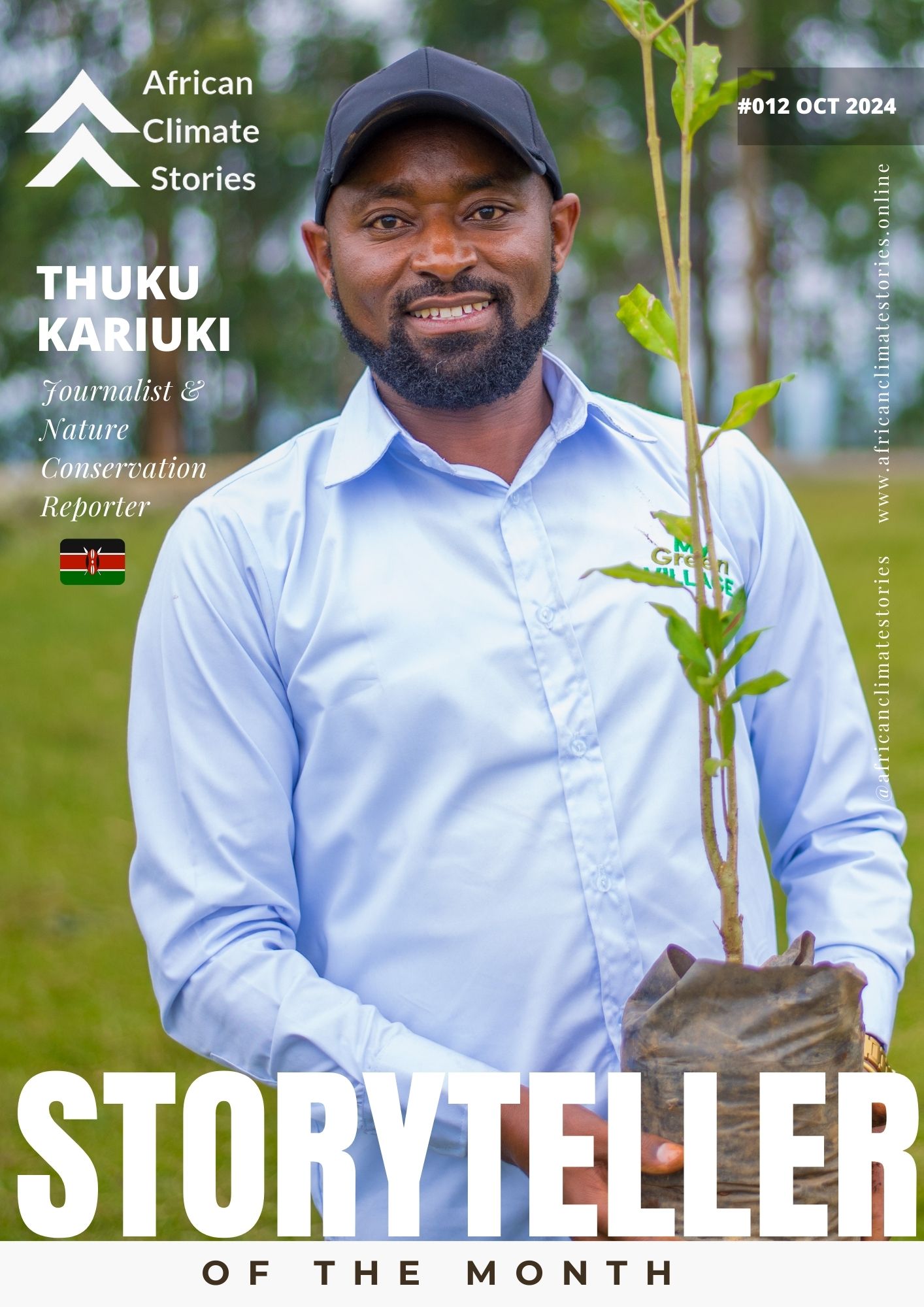This month we are taking you all the way to Nairobi Kenya to meet our storyteller of the month.
Thuku Kariuki is a producer/production manager and a filmmaker at Afrika Live Media, a pan-African media production company based in Nairobi, Kenya. He has worked in the media industry for the last 14 years. And for the last 9 years, Thuku has worked as a Nature conservation and environment documentary filmmaker / journalist. This 9 years of environmental journalism has led him to work for several local and international media organizations among them Deutsche Welle, Giving Nature a Voice for The Aga Khan University School of media and communication in partnership with NTV and TRT World News. Thuku has produced tens of environment conservation stories for DW Eco Africa, a pan African environment magazine show broadcast on Deutsche Well TV and through their partners NTV Uganda and channels TV Nigeria. He has produced tens of stories in Kenya, Tanzania and Ethiopia.
So we want to use this feature to highlight some of those key moments to see places where we can find inspiration and lessons from his story and experiences.
What inspired your shift to nature and environmental documentary filmmaking over the last nine years?
I have had the love for the environment from when I was a very young man watching my dad plant trees and sometimes planting with him and also tilling the land with my parents and loving how they were planning their different fields. I come from a very green zone with a very well kept and neat compound so when I became a journalist and started practicing, of course I was forced to cover what was on the docket but from time to time, I would get a chance to do environment stories and that’s when I discovered my love for the environment filmmaking and storytelling. Environment stories would give me more peace and comfort when I covered them. 9 years ago, when my company Afrika Live Media started working for Deutsche Welle Eco Africa program, I got a chance to purely cover environment and I have never looked back. Now, I am growing “My Green Village” platforms as an outlet to my environment stories. I have since been doing both environment films and text stories for different outlets both in Kenya and around the world.
African indigenous knowledge and practices are the golden card to conservation in Africa. If you look back at traditional African practices from getting medicine and food from the forest to bee keeping and other practices, it was all linked to conservation because everything was coming from the protected areas… When I’m doing my films, I try as much as possible to capture the community driven practices that are applicable to their areas as opposed to the ones borrowed from other places.
Thuku Kariuki
Journalist and Nature conservation reporter
Can you share a memorable or challenging experience from filming in nature that deepened your commitment to conservation?
I was once producing a story on the Nairobi River Clean-up – Once a dump site, now a park. The story entailed a number of facets from garbage management to improving the quality of life for Nairobians through city redesigning and new building technologies. When filming in Kibera with a local conservation group Mazingira Yetu, I noticed how difficult it was to navigate the heaps of garbage, sewage rivers and open sewers but I saw a very clear resolve with locals and the organization to make things work for a better environment especially in cutting down the free-flowing waste. With that in mind and in my resolve to make things better, I upped my commitment in planting and growing trees and went ahead to establish groups and schools’ participation in My Green Village Initiatives. To keep the message alive, I make sure most of the motivational videos from My Green Village activities are and distributed through different channels.
You’ve produced several stories for DW Eco Africa, TRT World News, NTV Uganda, and Africa Live TV. Could you tell us about a specific conservation story that had a significant impact on you or your audience?
A few years ago, I produced a story on the restoration of Kirisia Forest in Samburu county in northern Kenya whereby a local community had vacated the forest area they had occupied and degraded for years and they become the guardians of the forest. To me, that was a big win for the environment and the community and it inspired me to keep telling more such like impactful stories in a move to help communities from all over the world learn from each other. The story got a huge and positive feedback from the audience and the community has requested us to film a more detailed documentary about their work so that it can be used as an educational piece all over the world. I went back to Kirisia Forest later on to monitor progress – which was very positive and I planted some trees.

What role do you think storytelling plays in driving environmental change and influencing policy?
Storytelling is a very strong tool in driving environment change and influencing policy because it makes people interact with and understand matters as presented both with facts and data helping people understand exactly what is at stake. Storytelling gives a revelation and opens peoples eyes to either take action or suffer the consequences.
Given the increasing importance of addressing climate change, what do you see as the biggest challenge in environmental journalism today?
The biggest challenges in environmental journalism today are the gap between experts and journalist and resources to help journalists in their work. In many countries in Africa, experts are still not readily available for journalist when in need hence the lack of expertise contribution in most cases therefore frustrating journalists in their environment reporting.
Can you share how your work with Giving Nature a Voice has contributed to the conservation discourse in Kenya?
Giving Nature A Voice connected journalists to production resources as well as to conservation communities hence helping bring the environment cases that needed shining a light on. This project helped different communities learn from each other about matters environment conservation making it easy for them to take up conservation initiatives that they never knew could work on their areas. The project also helped enlighten communities about environment challenges around them and how to overcome them.
What do you believe is unique about the African approach to environmental conservation, and how do you try to capture that in your films?
African indigenous knowledge and practices are the golden card to conservation in Africa. If you look back at traditional African practices from getting medicine and food from the forest to bee keeping and other practices, it was all linked to conservation because everything was coming from the protected areas. In many African societies, the forest was seen as a holy place and therefore protected and respected. In the places that they are still practicing the tradition management practices, conservation is more successful than in other areas. When I’m doing my films, I try as much as possible to capture the community driven practices that are applicable to their areas as opposed to the ones borrowed from other places. My films are community based, local solutions for local problems.

What advice would you give to young filmmakers who are passionate about using their skills for nature conservation and climate storytelling?
To young filmmakers and storytellers, my advice is simple. Start by understanding what is in it in nature conservation from a community perspective. Its all about the people. Humanize everything then pass your message with the simplest language possible so that you can communicate and reason with everyone from young children to old people.


